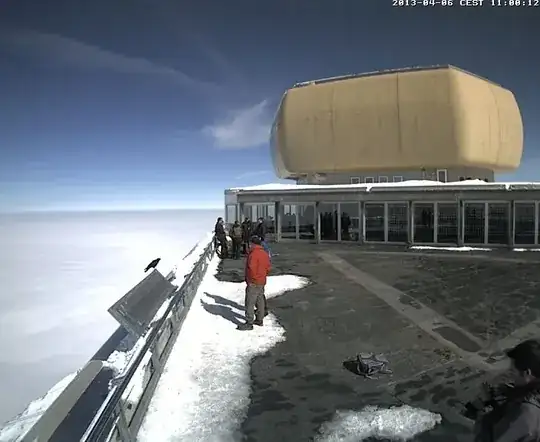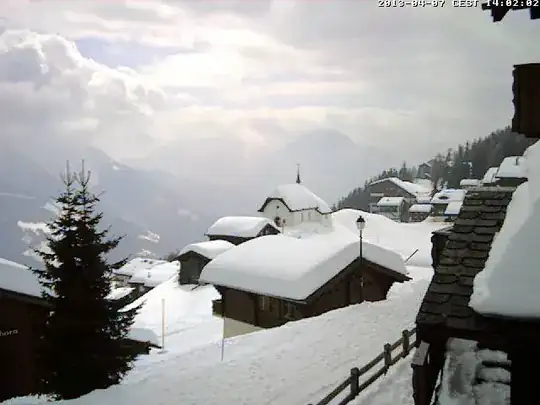How would you algorithmically detect for any given photo whether the sun was shining when the picture was taken?
Examples
A sample from this webcam at a mountain top:

Clearly the sun is shining.
In this other sample it's far less obvious:

One could probably detect fairly easy whether it's foggy by trying to identify the tiny church spire on the chapel in the center. However, knowing very little about image processing I'd be surprised if there was a (combination of) algorithm that could reliably tell if there's sunshine or not.